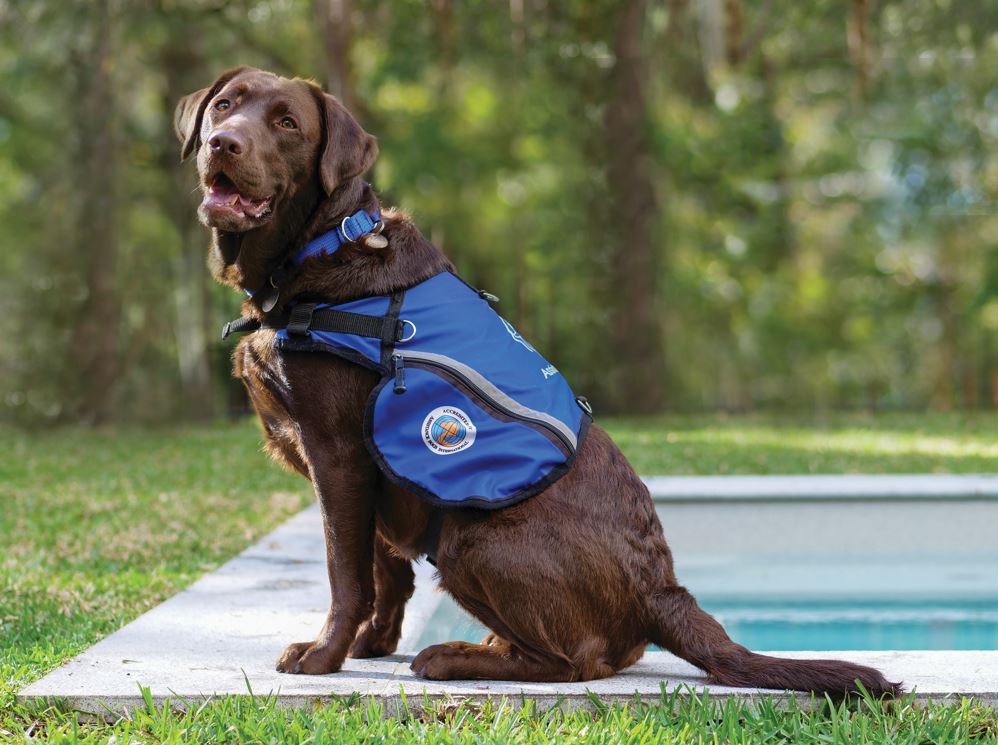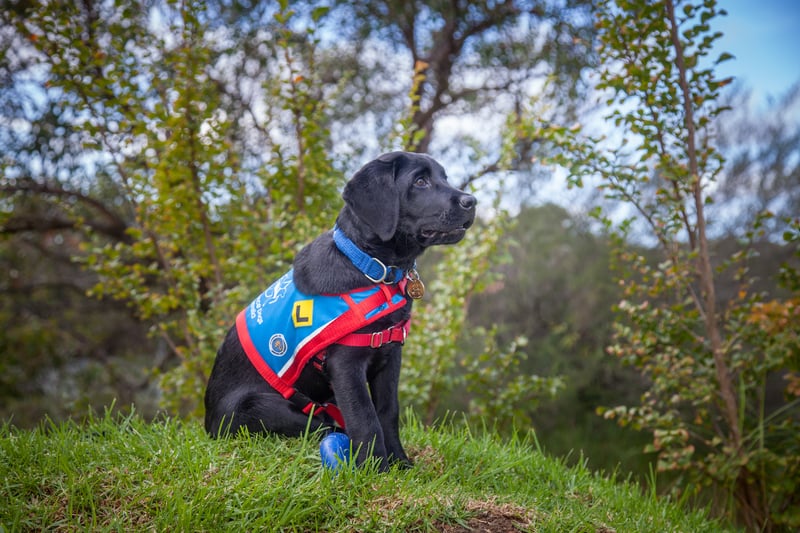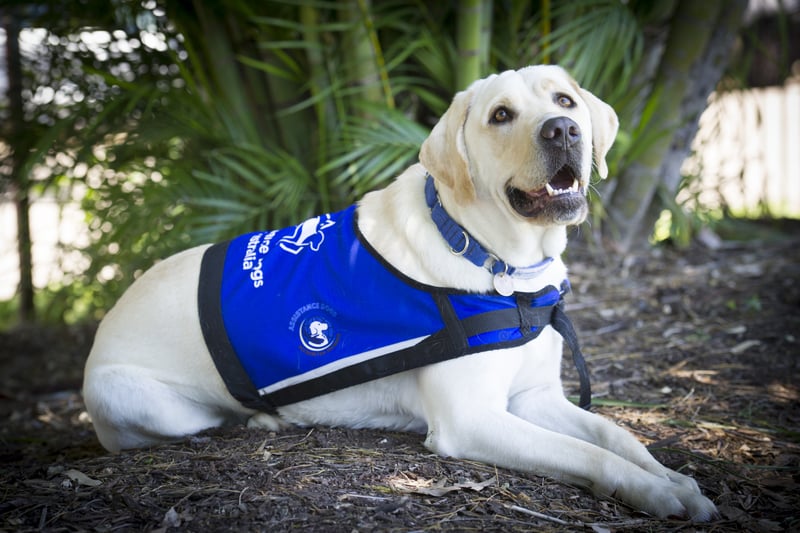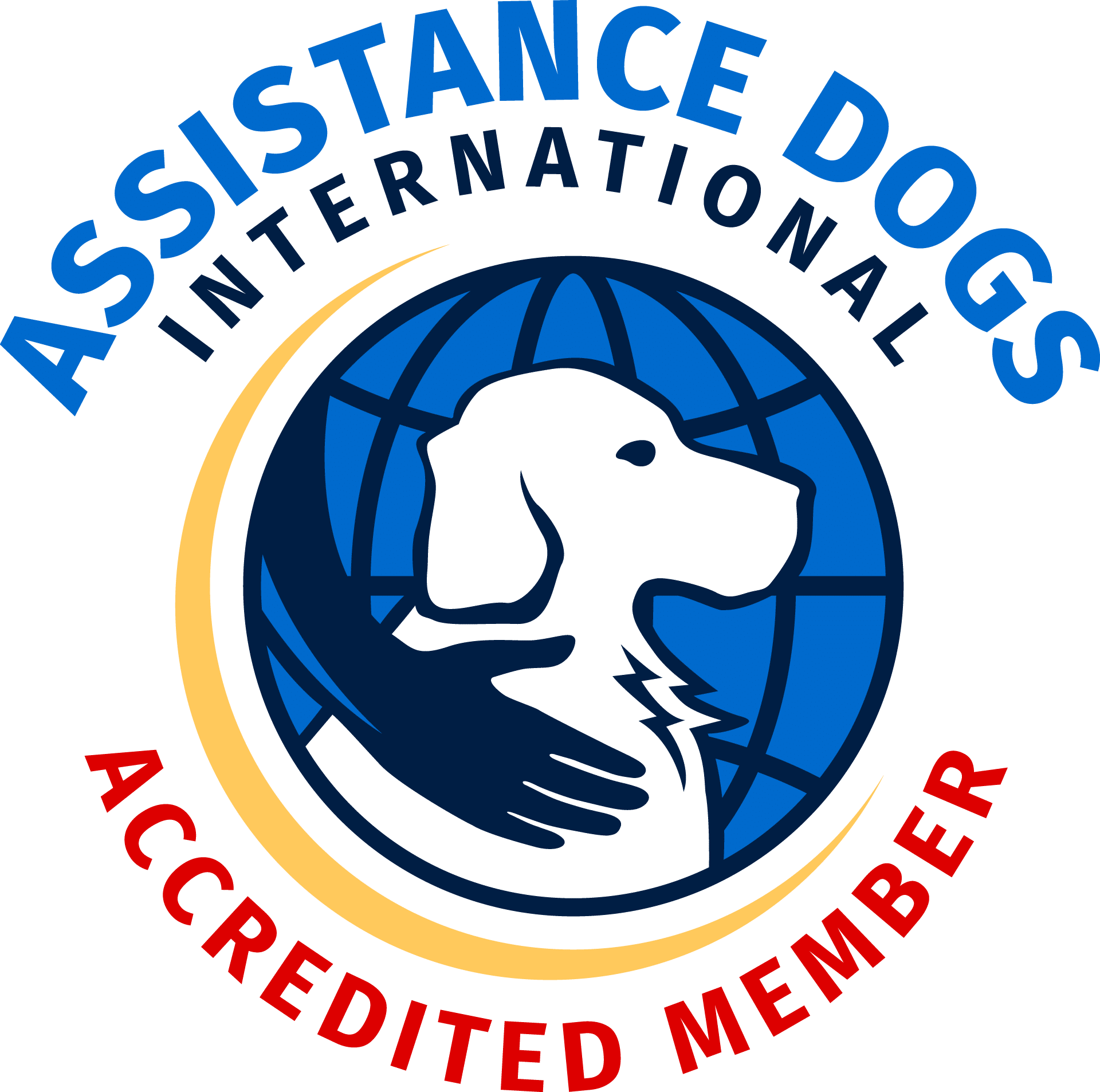Why Do Service Dogs Wear Vests?
How can you tell that a dog is a legitimate Service Dog?
You might make a guess based on a dog’s extraordinary manners, its glossy fur coat, or its attentive gaze as it watches over its human.

But the easiest way to spot an official Assistance Dog we have trained is by its vest: a light blue vest for our pups-in-training and a darker blue for our graduated, working Assistance Dogs. An Assistance Animal will have a jacket with branding from the organisation that qualified it.

The vest, or jacket, is a uniform that allows people to identify, at a glance, an accredited service dog with public access rights.
Click here to learn more about Public Access Rights.
Not only does the jacket help differentiate between a working dog and a pet dog, it reminds people to not play with or otherwise engage with this pup that is out and about.
It’s important that our dogs are comfortable wearing the jacket. This aspect is so crucial that dogs can be disqualified from the program if they have a sensitivity to wearing the jacket (among other issues).
This is why our puppies put on jackets at a very young age. Not only do they need to get used to wearing it, they must also distinguish that when they have their jacket on, it’s business time. When the jacket is off, they are officially off-duty and free to be pet dogs. The difference in a dog’s demeanour between jacket on or off is like night and day.

The vest or jacket poses many great benefits to the human too.
For example, for many clients who use a wheelchair, their Assistance Dog helps take the stares and attention away from them. Instead of being made to feel uncomfortable, interactions with curious members of the public are more positive, which helps to increase confidence and self-esteem while the clients are out and about.
Not only that, it helps the public — and in some cases, family members — to become more understanding of disability, especially when it is an invisible disability such as autism or Post-Traumatic Stress Disorder (PTSD). This understanding and kindness can make all the difference in the world.
Don’t forget, you should not pet or distract an Assistance Dog if you see one. It is best to keep a respectful distance or better yet, ignore the Assistance Dog.
Confused about the difference between a Service Dog and Assistance Dog? Click here.
About us | Support us | Services | Terms & Conditions | Contact us
Copyright © 2023 Assistance Dogs Australia ABN: 90 074 746 160. Privacy Policy.


